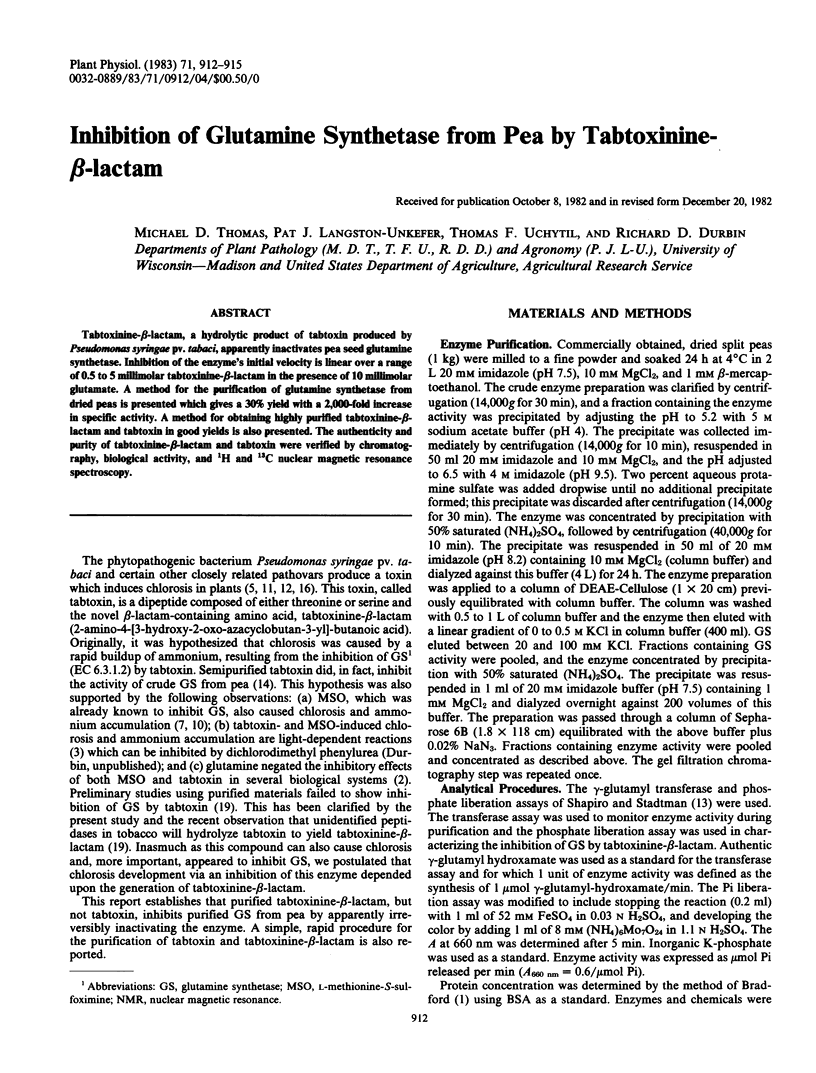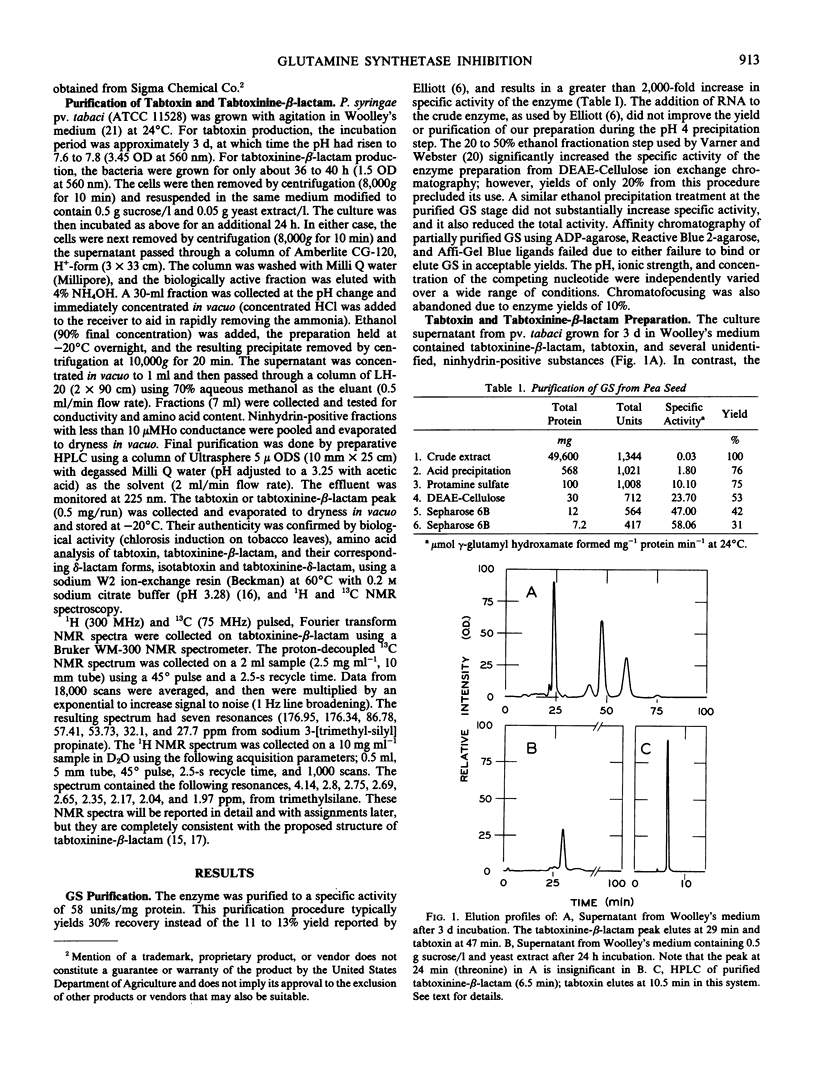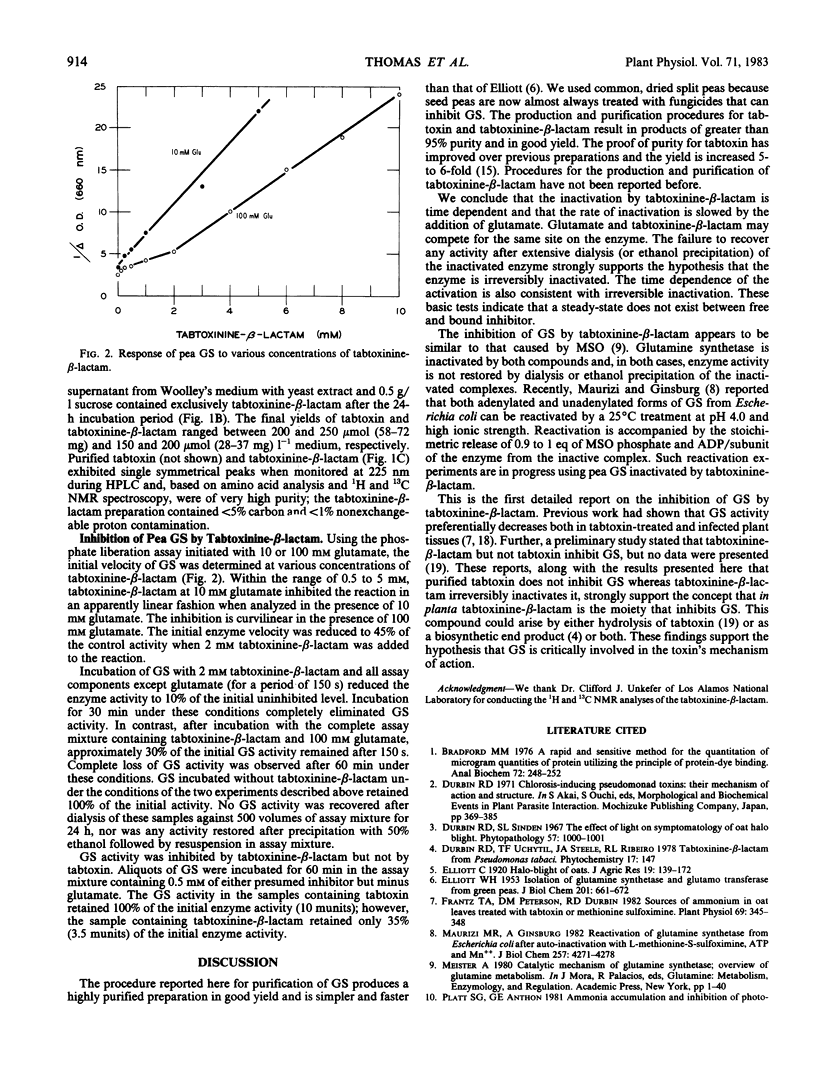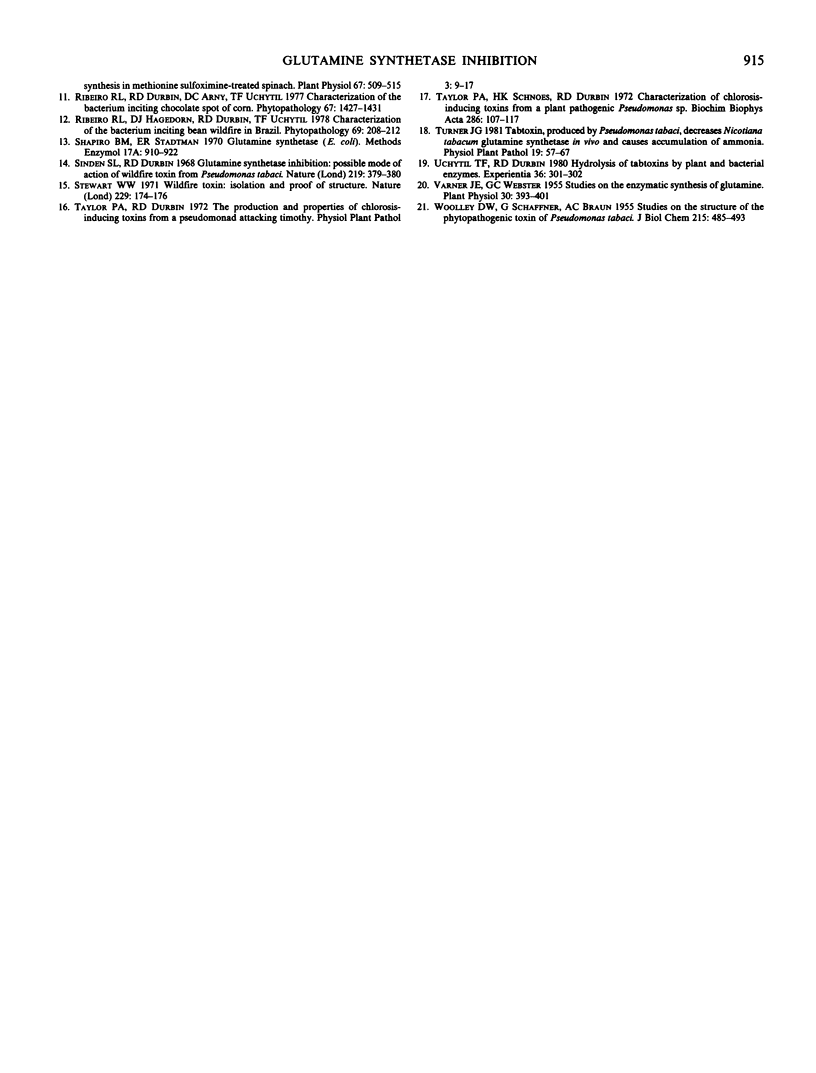Abstract
Tabtoxinine-β-lactam, a hydrolytic product of tabtoxin produced by Pseudomonas syringae pv. tabaci, apparently inactivates pea seed glutamine synthetase. Inhibition of the enzyme's initial velocity is linear over a range of 0.5 to 5 millimolar tabtoxinine-β-lactam in the presence of 10 millimolar glutamate. A method for the purification of glutamine synthetase from dried peas is presented which gives a 30% yield with a 2,000-fold increase in specific activity. A method for obtaining highly purified tabtoxinine-β-lactam and tabtoxin in good yields is also presented. The authenticity and purity of tabtoxinine-β-lactam and tabtoxin were verified by chromatography, biological activity, and 1H and 13C nuclear magnetic resonance spectroscopy.
Full text
PDF



Selected References
These references are in PubMed. This may not be the complete list of references from this article.
- Bradford M. M. A rapid and sensitive method for the quantitation of microgram quantities of protein utilizing the principle of protein-dye binding. Anal Biochem. 1976 May 7;72:248–254. doi: 10.1016/0003-2697(76)90527-3. [DOI] [PubMed] [Google Scholar]
- ELLIOTT W. H. Isolation of glutamine synthetase and glutamotransferase from green peas. J Biol Chem. 1953 Apr;201(2):661–672. [PubMed] [Google Scholar]
- Frantz T. A., Peterson D. M., Durbin R. D. Sources of ammonium in oat leaves treated with tabtoxin or methionine sulfoximine. Plant Physiol. 1982 Feb;69(2):345–348. doi: 10.1104/pp.69.2.345. [DOI] [PMC free article] [PubMed] [Google Scholar]
- Maurizi M. R., Ginsburg A. Reactivation of glutamine synthetase from Escherichia coli after auto-inactivation with L-methionine-S-sulfoximine, ATP, and Mn2+. J Biol Chem. 1982 Apr 25;257(8):4271–4278. [PubMed] [Google Scholar]
- Sinden S. L., Durbin R. D. Glutamine synthetase inhibition: possible mode of action of wildfire toxin from Pseudomonas tabaci. Nature. 1968 Jul 27;219(5152):379–380. doi: 10.1038/219379a0. [DOI] [PubMed] [Google Scholar]
- Stewart W. W. Isolation and proof of structure of wildfire toxin. Nature. 1971 Jan 15;229(5281):174–178. doi: 10.1038/229174a0. [DOI] [PubMed] [Google Scholar]
- Taylor P. A., Schnoes H. K., Durbin R. D. Characterization of chlorosis-inducing toxins from a plant pathogenic Pseudomonas Sp. Biochim Biophys Acta. 1972 Nov 24;286(1):107–117. doi: 10.1016/0304-4165(72)90096-7. [DOI] [PubMed] [Google Scholar]
- Varner J. E., Webster G. C. Studies on the Enzymatic Synthesis of Glutamine. Plant Physiol. 1955 Sep;30(5):393–402. doi: 10.1104/pp.30.5.393. [DOI] [PMC free article] [PubMed] [Google Scholar]
- WOOLLEY D. W., SCHAFFNER G., BRAUN A. C. Studies on the structure of the phytopathogenic toxin of Pseudomonas tabaci. J Biol Chem. 1955 Aug;215(2):485–493. [PubMed] [Google Scholar]


